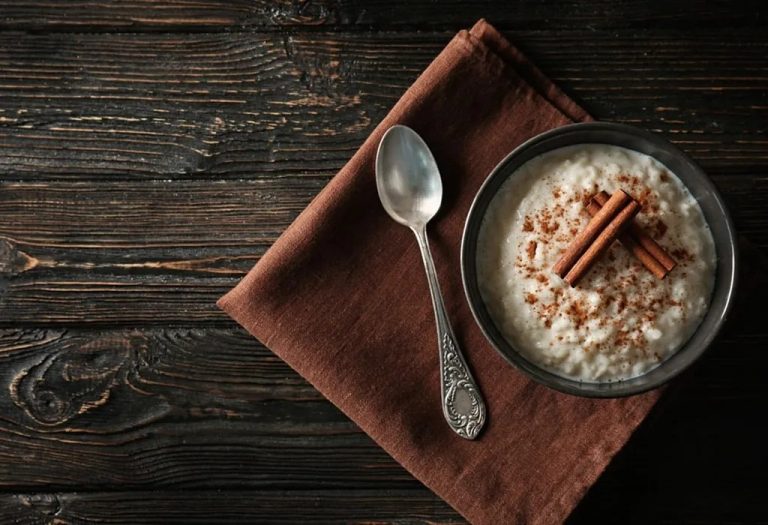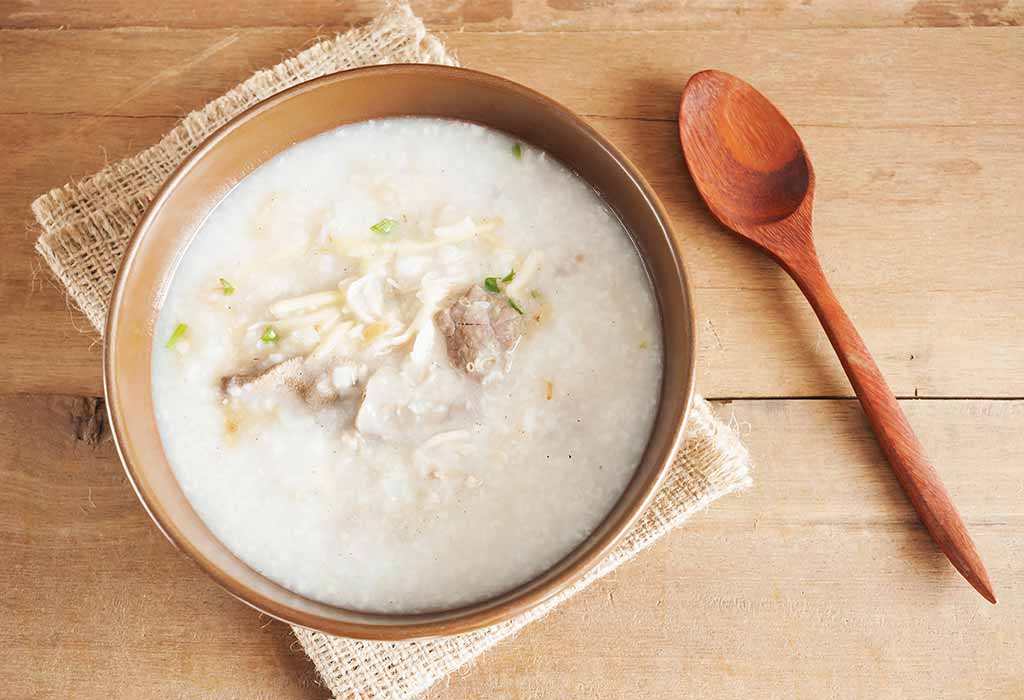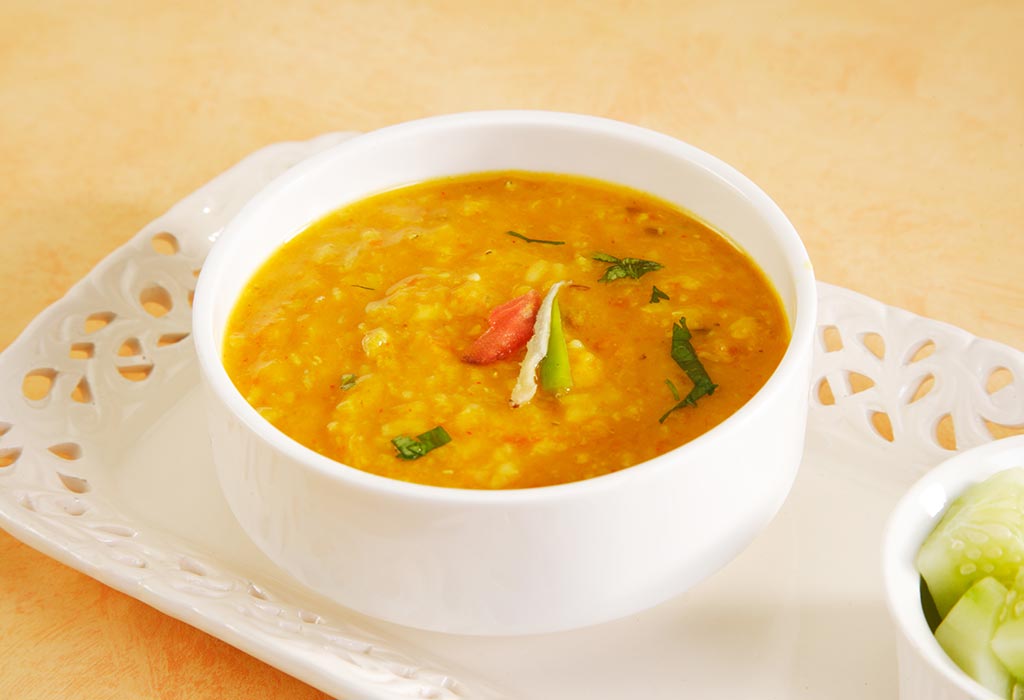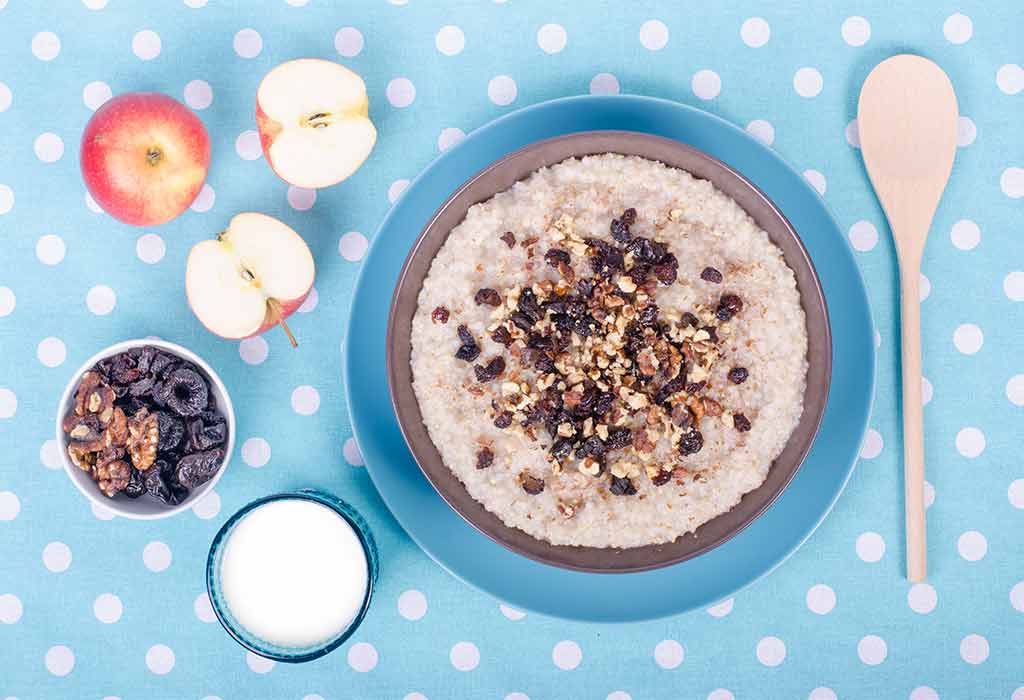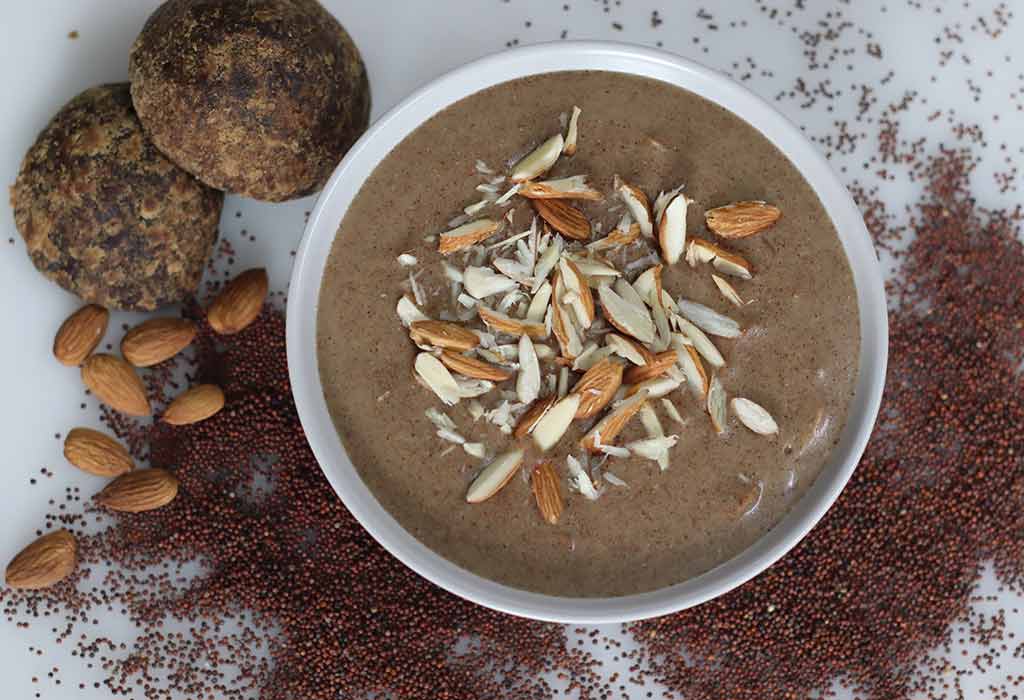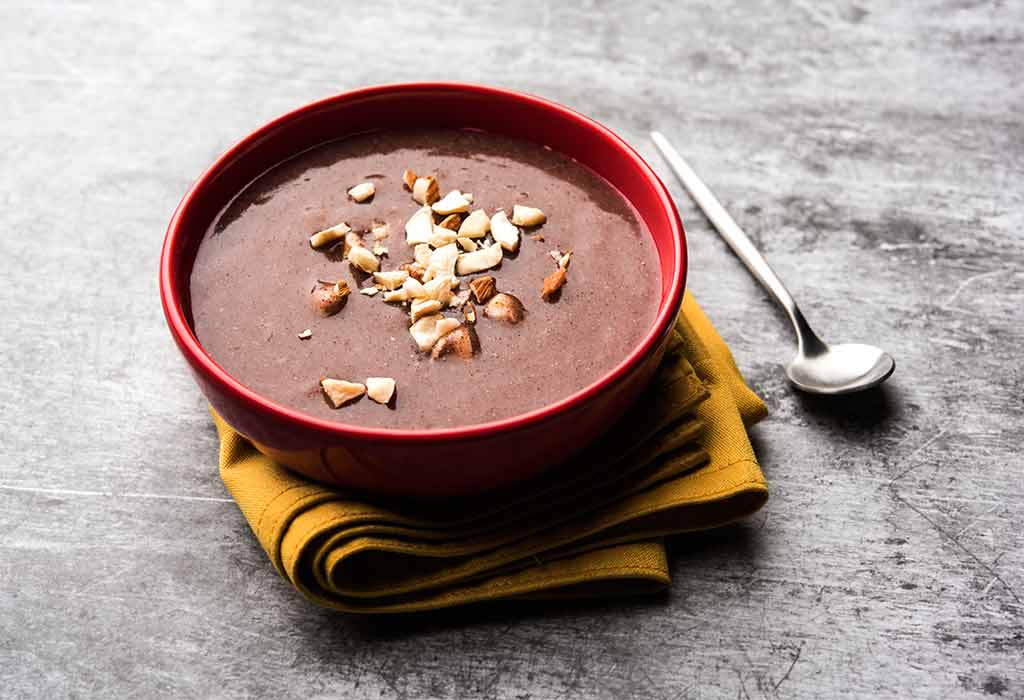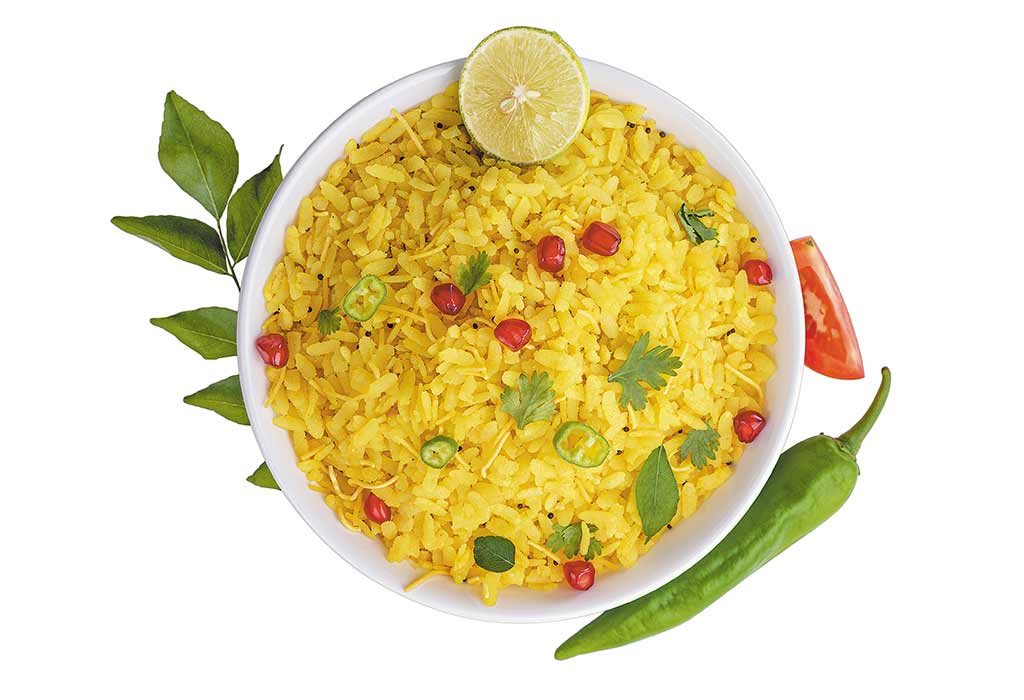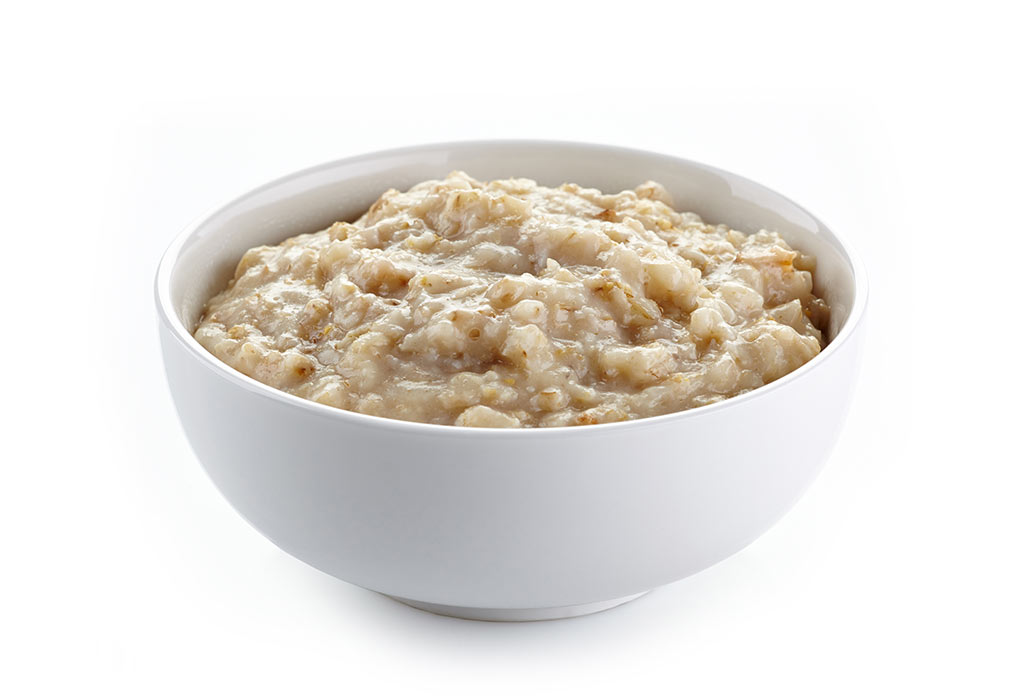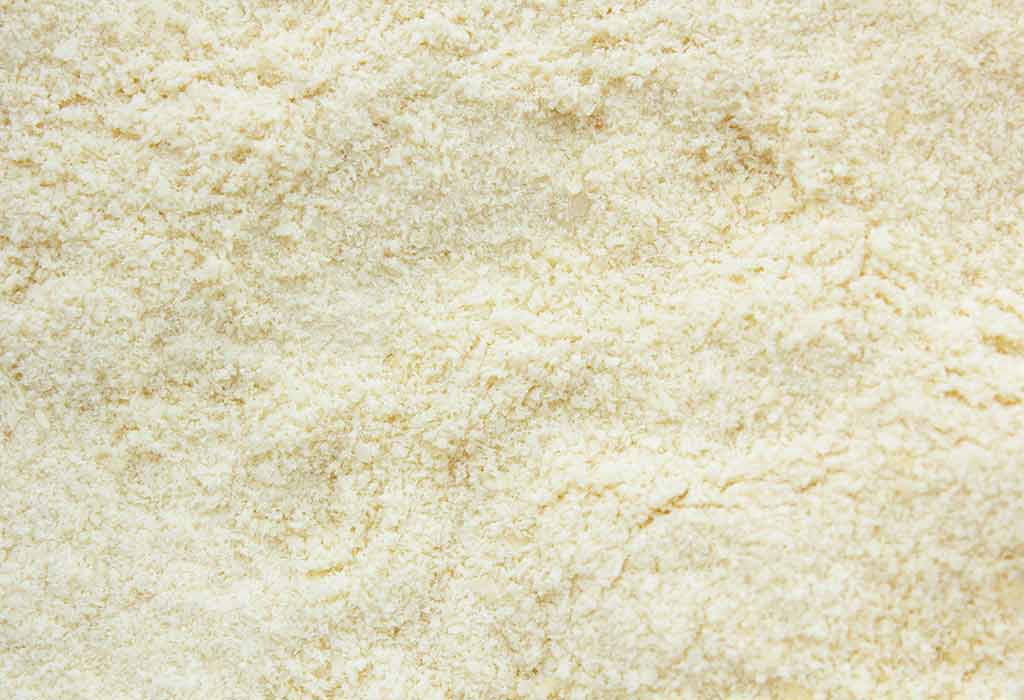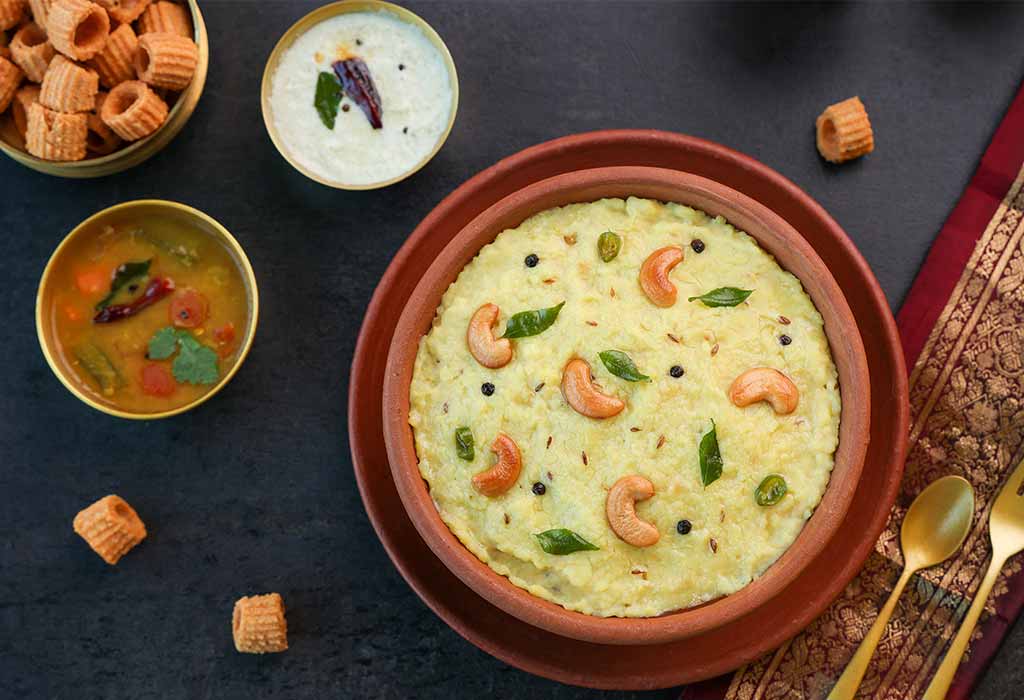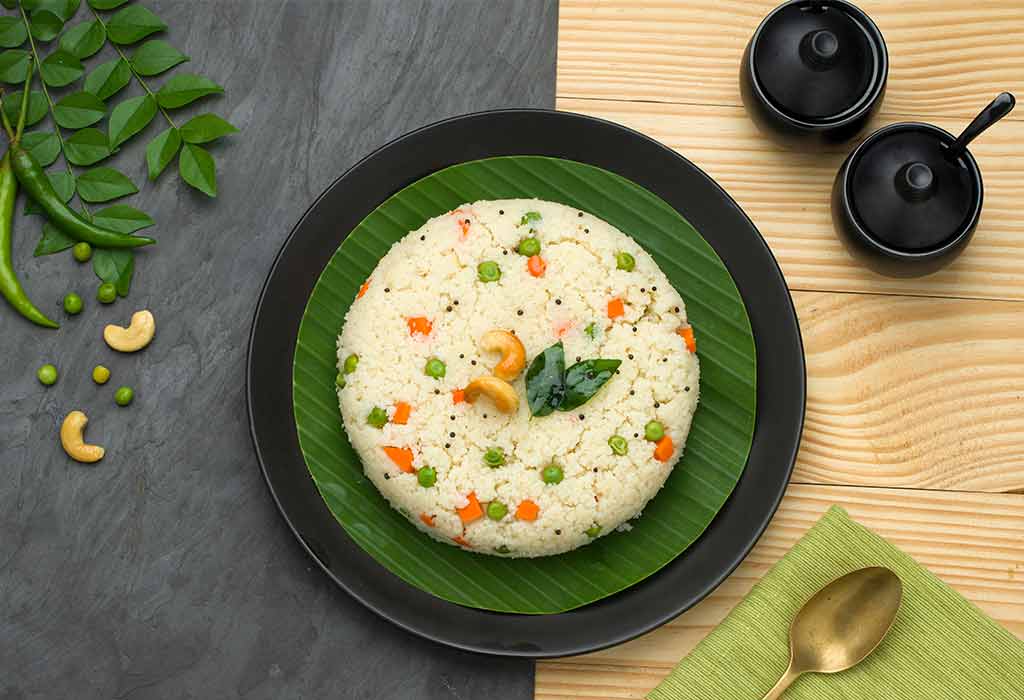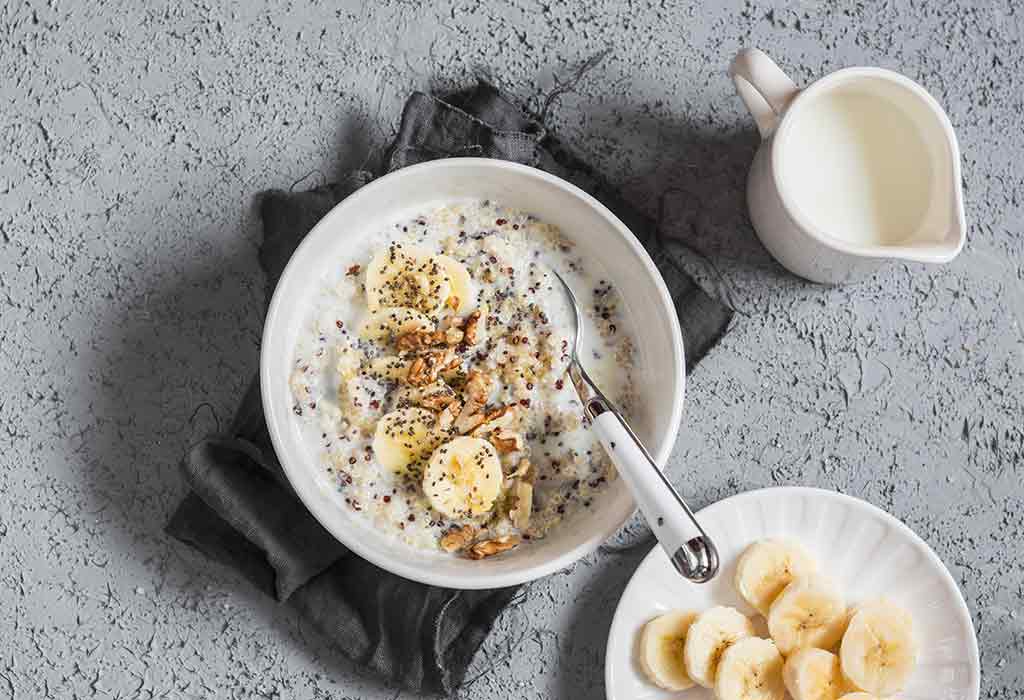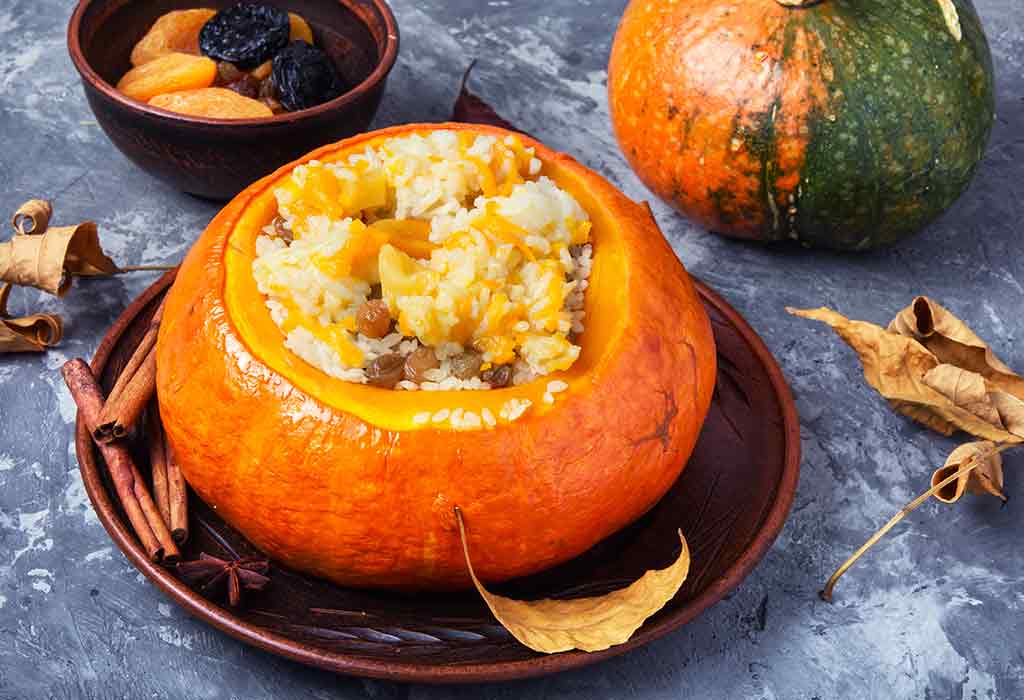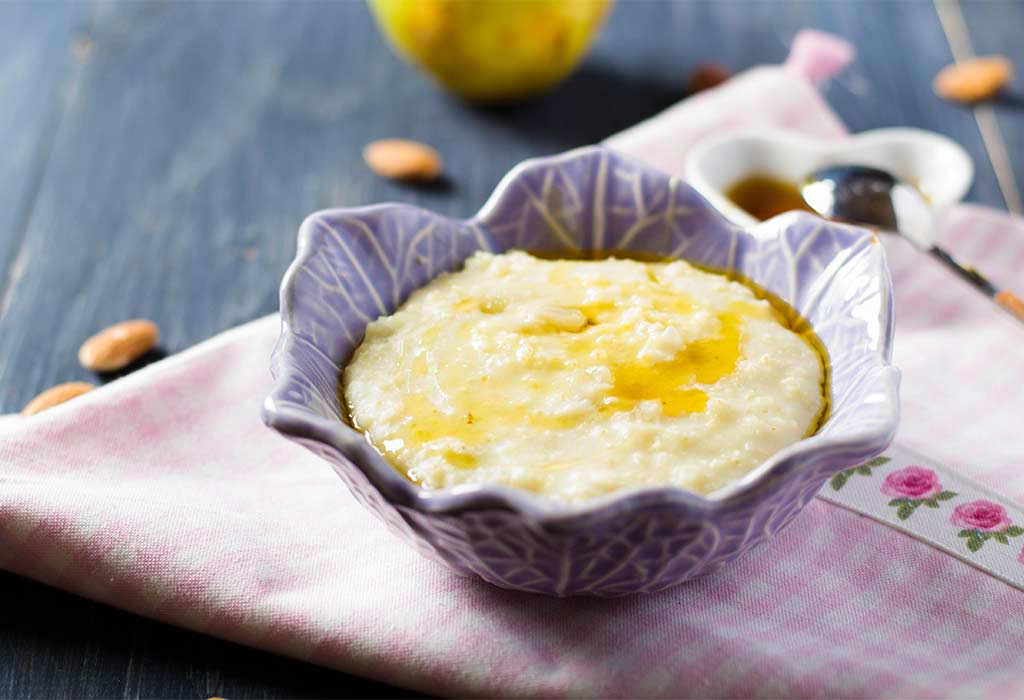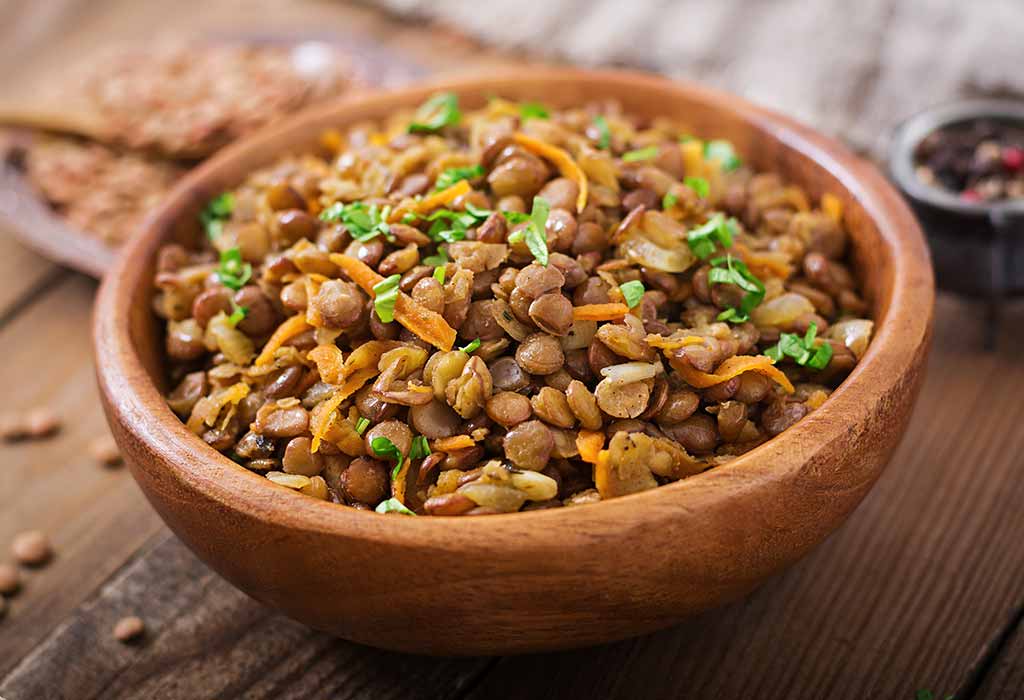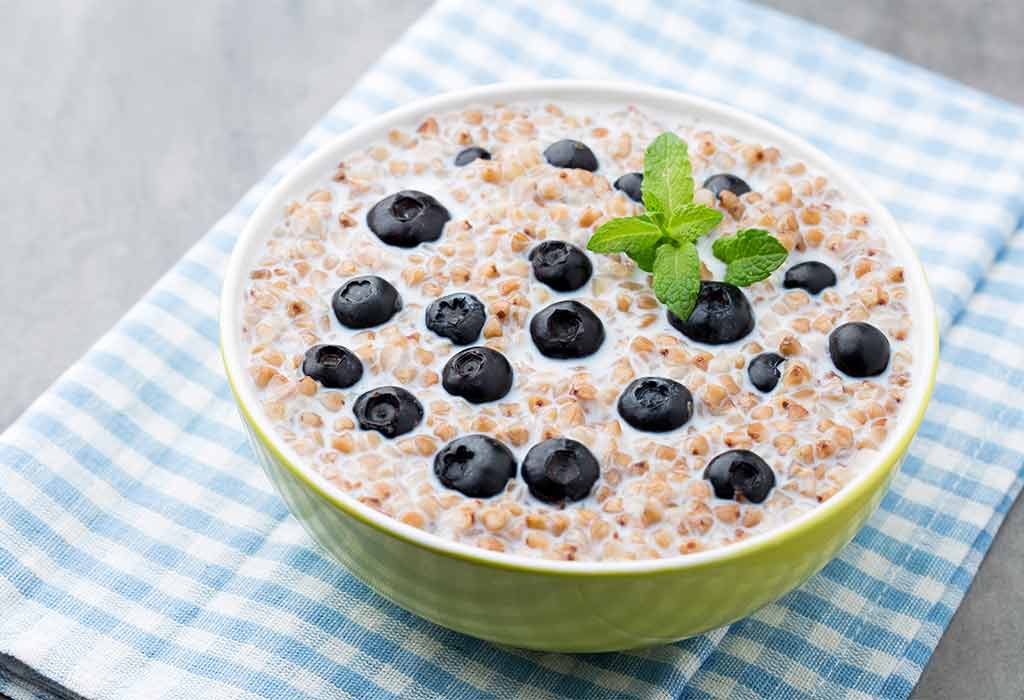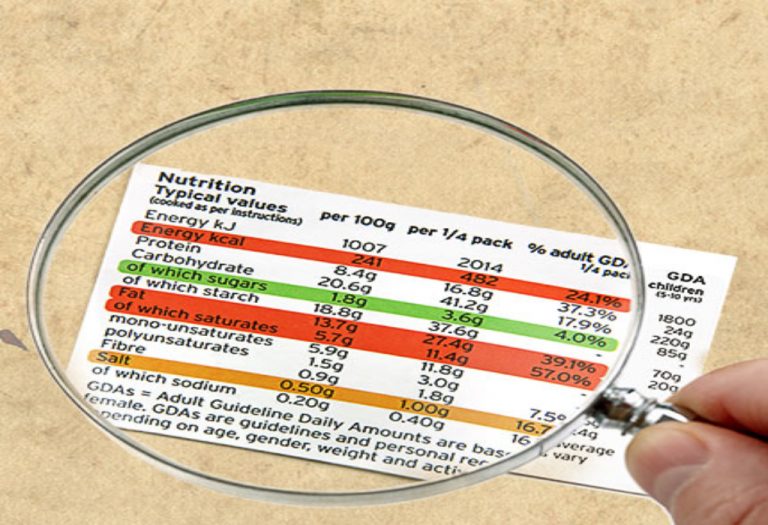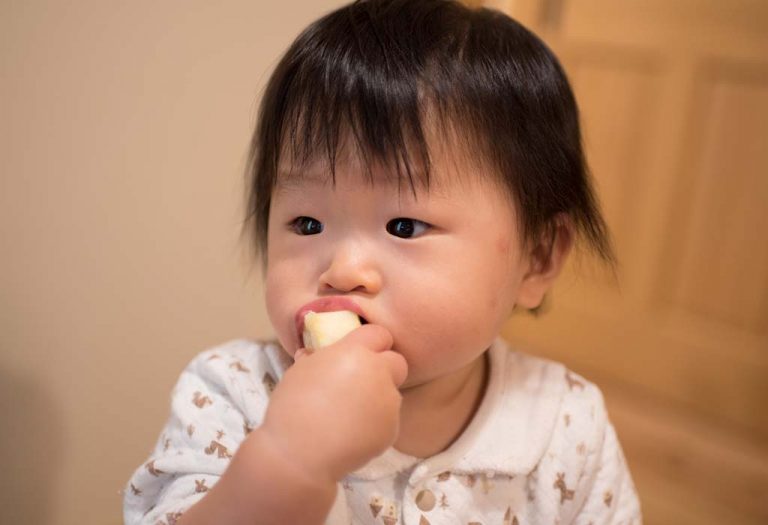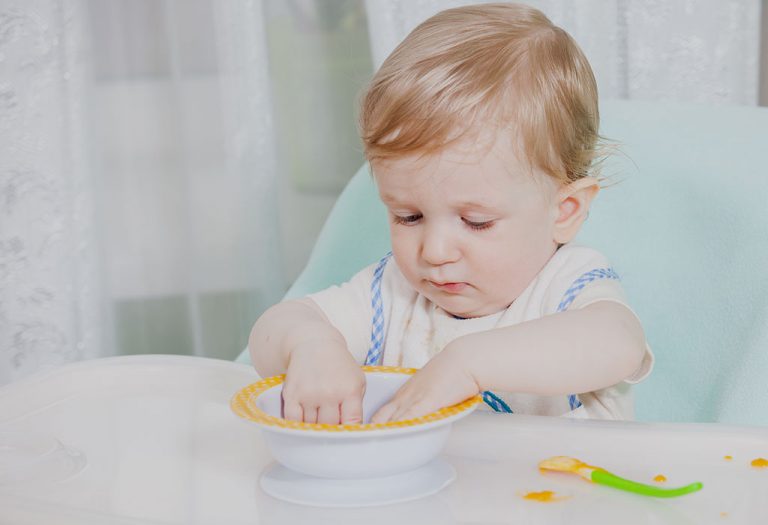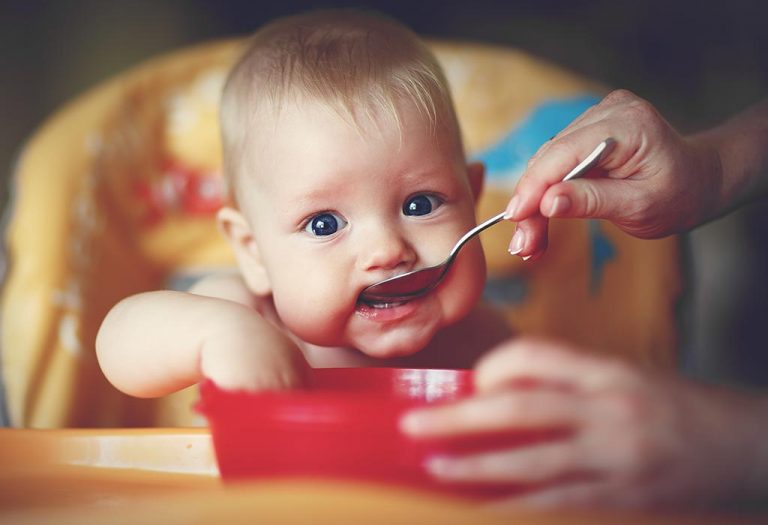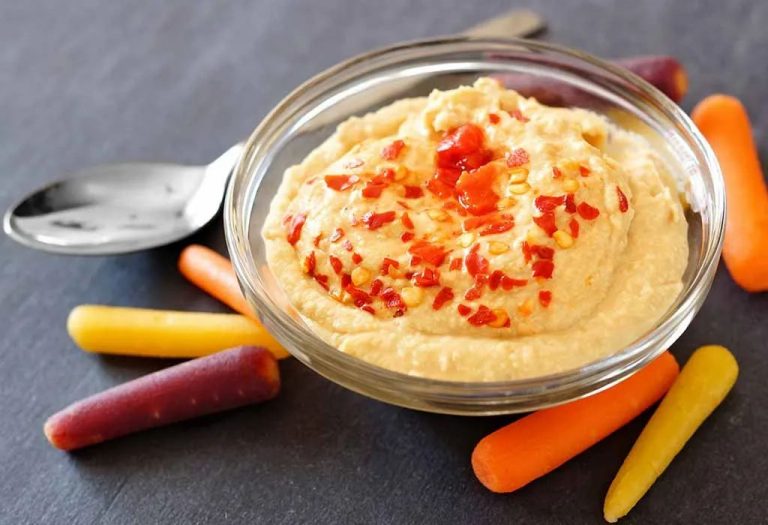15 Healthy Porridge Recipes for Babies

One of the hardest parts associated with being the mother of an infant is the little one’s diet. Feeding your child becomes not only a regular chore but also a constant, confusing question. It can be an extremely overwhelming time when several questions regarding the suitability of the dish trouble you. Questions like whether the dish is appropriate for your little one, whether it is digestible or safe to feed him, etc. tend to swarm your mind. In such situations, there can only be one answer – porridge! Yes, instant porridges for babies are safe and highly nutritious. And, did you know there are several ways to make porridge? Read on for some ideas on how to make porridge for your baby.
When Can You Introduce Porridge to a Baby?
Introducing porridge to a baby depends on their developmental stage and readiness for solid foods. In general, most pediatricians recommend starting solid foods around 6 months of age, but it’s essential to watch for these signs of readiness before introducing anything besides breast milk or formula.
- The ability to sit up with support.
- Showing interest in what others are eating.
- Increased mouthing and chewing motions.
- Loss of tongue thrust reflex (pushing food out of the mouth with the tongue).
Once your baby shows these signs and your pediatrician gives the go-ahead, you can start introducing single-grain infant cereals, such as rice cereal or oatmeal. These cereals are typically mixed with breast milk, formula, or water to a thin consistency suitable for your baby’s age and readiness.
15 Healthy Infant Porridge Recipes
Porridge recipes can be quite a lifesaver when you are clueless as to what you can feed your baby. Here are some highly nutritious porridge recipes your child is sure to enjoy during his mealtime.
1. Rice Porridge
Rice porridge for babies is energy-dense and easy to digest. Follow this simple recipe to make some delicious rice porridge for your baby.
Ingredients
- Parboiled rice/ rice cereal/ puffed rice – 2 tbsp
- Water – 1.5 cups
How to Make
If you are using parboiled rice/ puffed rice, ensure you dry it in the sun for at least an hour. If you are using rice cereal, you may start directly from step 3
- Dry roast the sun-dried, parboiled rice until it gets slightly puffy
- Grind the rice into a powder. You can store the extra powder for future use in an airtight container.
- Now, take the required amount of ground rice/ rice cereal in the same saucepan and add water to it.
- Mix it well to ensure there are no lumps.
- Cook it on low flame for about 5 (2-3) minutes.
- Let it come to room temperature before feeding your baby.
2. Rice and Moong Dal Porridge
Rice and Moong Dal Porridge is high in protein and brings about muscle development in babies. Here’s how you can make it.
Ingredients Required
- Parboiled rice – 2 tbsp
- Moong Dal – 1 tbsp
- Cumin seeds – a pinch (optional)
or
- Rice and moong dal powder – 2 tbsp
- Water – 1.5 cups
- Ghee – ¼ Tsp
How to Make
- Dry roast the moong dal and the dried rice on low flame until the rice becomes puffy.
- Add cumin powder and mix well. You may choose to skip this step for younger babies.
- Then, grind the roasted grains into a fine powder.
- Take some ghee in a saucepan.
- Add the ground rice and moong dal and water.
- Keep stirring to ensure there are no lumps. Cook for about 5 to 7 minutes.
- Feed it at room temperature.
3. Barley Apple Porridge
Rich in dietary fibres, barley apple porridge can help ease the digestive process.
Ingredients Required
- Barley dry cereal powder – 2 tbsp
- Apple – 1, small-sized
- Breast milk – ¼ cup (optional)
- Water – 1 cup
How to Make
- De-seed the apples.
- Grate and cook them to make a soft apple sauce
- In a separate saucepan, put the barley and a cup of water and keep stirring.
- Cook for ten minutes.
- Add the fruit puree and mix well.
- At this point, you can also add some breast milk.
- Cook for three more minutes.
- Feed the porridge to your baby after it cools down.
4. Ragi Porridge with Whole Ragi
This ragi porridge for babies recipe is rich in calcium. Let’s find out how it is made.
Ingredients Required
- Ragi seeds – 1 cup
- Water to grind
- Powdered jaggery – 1/2 tsp (optional)
How to Make
- Wash the ragi adequately until it is clean, and then soak it in water for twelve hours.
- Grind the soaked ragi with some water till you get a smooth paste.
- Using a cheesecloth, strain the ragi milk into a saucepan.
- Cook this milk until it thickens inconsistency.
- Add some jaggery for sweetening.
5. Ragi Porridge Using Ragi Flour
Ragi is also rich in calcium and helps tremendously in the development of bones. This is another reason why you must include the recipe in your baby’s diet.
Ingredients Required
- Homemade ragi flour / organic ragi flour – 2 tbsp
- Powdered jaggery – 1.5 tbsp (optional)
- Water – ¼ cup + ¼ cup
- Cow’s milk – 1 cup (optional, don’t add for babies under one year or if he is lactose intolerant)
How to Make
- Take the jaggery in a saucepan, add a cup of water and boil till the jaggery melts.
- Strain this liquid.
- Take the ragi in a separate saucepan.
- Add the strained jaggery and 1/4th cup of water the ragi.
- Keep stirring or whisking the mixture on a medium flame, until it turns into a shiny brown colour.
- Add a cup of milk if apt and cook until the consistency thickens.
6. Sweet Potato and Poha Porridge
Sweet potatoes are rich in Vitamin A and help improve vision and skin. This recipe thus is not just delicious but also highly nutritious. Here’s how you can make this porridge for your baby.
Ingredients Required
- Poha/ flattened rice – 1 cup
- Sweet potato – 1, medium-sized
- Powdered jaggery – 2 tbsp (optional)
- Cardamom powder – a pinch (optional)
- Water – as required
- Ghee – 2 tablespoons
How to Make
- Soak the poha in water until they are soft.
- Cook the sweet potatoes for three whistles in a pressure cooker (on a medium flame).
- Melt the jaggery by heating it in a pan with some water and strain it to remove all the impurities.
- Mash the sweet potatoes with a fork and cook the mash with the jaggery water.
- Add cardamom powder and mix well.
- Add the soaked poha and cook it over a medium flame for two minutes.
- Add ghee to the mix and cook it for another two minutes.
7. Oats Porridge
Oats are rich in fibre and aid digestion. They are, therefore, highly recommended to babies while weaning them onto solids. This oats porridge for babies recipe can be given to your baby after he is at least a year old. Do not feed oats porridge to babies younger than a year.
Ingredients Required
- Homemade oatmeal cereal – ¼ cup
- Water – ¾ cup
- Breast milk/ cow’s milk – ¼ cup
- Dates syrup/ honey/ sugar – 1-2 tsp (optional)
How to Make
- Take the oatmeal in a saucepan and add a quarter cup of water.
- Whisking well and cook the porridge for five minutes on a medium flame.
- If it thickens, add milk or water if required.
- Cool it down and serve it warm.
- You may add additional milk while feeding your baby.
8. Salted Cerelac Porridge
Cerelac is rich in iron; therefore, it is a perfect alternative for the foods that help prevent anaemia in babies. This recipe can be fed to babies over 9 months old.
Ingredients Required
For Homemade Cerelac Powder
- Ragi – 1 cup
- Brown rice – 1 cup
- Horse Gram (chana dal) – 1/2 cup
- Red Lentil (masoor dal) – 1/2 cup
- Green Gram (moong dal) – 1/2 cup
- Almonds – 1/2 cup
- Cardamom – 8 to 10 pods
For the Porridge
- Homemade cerelac powder/ sathu maavu – 2 tbsp
- Water – ¾ cup
- Jeera powder – a pinch (optional)
- Salt – a pinch (not recommended for babies below one year)
- Thin buttermilk – ¼ cup (made from 2 tbsp of curd & water)
How to Make
Homemade Cerelac Powder:
- Soak the ragi, brown rice and all the dals overnight in separate containers.
- Then, tie the grains in pieces of clean cotton and keep them in a dry area of the house.
- Dry the grains for a day in the sun.
- In a pan, preferably non-stick, dry roast the ragi, the rice, the dals and the cardamom pods separately on a medium-low flame.
- When the colour of each ingredient becomes darker, remove them in a clean, dry plate and let it cool.
- Then, grind the ingredients in a grinder till you get a fine powder.
- Store the homemade cerelac powder in an airtight container.
The Porridge:
- Take the homemade cerelac powder in a saucepan along with the water.
- Add salt and jeera powder and mix.
- Cook it while whisking for about 5 minutes on a low flame.
- Let it cool down.
- Add the buttermilk and mix well.
9. Rice and Green Moong Porridge
Rich in proteins, this Green Moong dal porridge is a delicious yet healthy treat for your little one. Here’s how you can make it.
Ingredients Required
- Green Moong Dal – 2 tbsp
- Rice – 1 tsp
- Powdered palm jaggery or usual jaggery – 1 tbsp (optional)
- Grated coconut – 2 tsp (optional)
- Water – as required
- Cardamom powder – 1 pinch (optional)
How to Make
- Soak the dal and rice for half an hour after thoroughly washing them.
- Boil the jaggery separately and strain off the impurities.
- Grind the soaked dal and rice along with some coconut. Grind it to a fine paste. Add some water if required.
- Heat a saucepan and cook the ground rice and dal paste.
- Add the cardamom and salt and cook it on a low flame for five minutes.
- This step is optional. If you want to, you may add some jaggery syrup at this point.
- Feed the porridge to your baby at room temperature.
10. Instant Sooji Porridge
Apart from aiding digestion, sooji recipe is easy to cook, takes very little time and is an excellent choice for working moms.
Ingredients Required
- Roasted sooji cereal – 2 tbsp
- Hot water – 1 cup
- Ghee -1/2 Tsp
- Breast milk – ½ cup
- Dates syrup/ honey/ sugar/ fruit puree – 1-2 tbsp (optional)
How to Make
- Boil the water in a pan.
- Add sooji to it slowly while whisking thoroughly.
- Cook for 5 minutes on a low/medium flame.
- Add the sweetener and the milk and cook for a few more minutes.
11. Quinoa and Banana Porridge
Quinoa is a complete protein and a great source of essential nutrients. Combined with the natural sweetness of banana, this porridge is sure to be a hit with your baby.
Ingredients Required
- Quinoa – 2 tbsp
- Ripe banana – 1 small
- Water or breast milk – 1/2 cup
- Cinnamon (optional)
How to Make
- Rinse the quinoa thoroughly.
- In a saucepan, combine quinoa and water or breast milk.
- Cook over medium heat until quinoa is tender and the mixture thickens, stirring occasionally.
- Mash the banana and add it to the cooked quinoa.
- Stir well to combine and add a dash of cinnamon if desired.
- Let it cool before serving to your baby.
12. Pumpkin and Rice Porridge
Pumpkin is rich in vitamins and minerals, making it an excellent addition to your baby’s diet. Combined with rice, it creates a creamy and nutritious porridge.
Ingredients Required
- Pumpkin – 1/2 cup, diced
- Rice – 2 tbsp
- Water – 1 cup
- Breast milk or formula (optional)
How to Make
- Steam or boil the diced pumpkin until soft.
- In a separate saucepan, combine rice and water.
- Cook the rice over medium heat until it’s fully cooked and the water is absorbed.
- Mash the cooked pumpkin and add it to the cooked rice.
- Stir well to combine, adding breast milk or formula to adjust the consistency if necessary.
- Let it cool before serving.
13. Millet and Pear Porridge
Millet is gluten-free and easy to digest, making it a suitable grain for babies. Paired with the sweetness of pear, this porridge is both nutritious and delicious.
Ingredients Required
- Millet – 2 tbsp
- Ripe pear – 1 small, peeled and diced
- Water or breast milk – 1/2 cup
How to Make
- Rinse the millet thoroughly.
- In a saucepan, combine millet and water or breast milk.
- Cook over medium heat until millet is tender and the mixture thickens, stirring occasionally.
- Add the diced pear to the cooked millet.
- Stir well to combine and cook for a few more minutes until the pear is soft.
- Let it cool before serving to your baby.
14. Lentil and Vegetable Porridge
Lentils are an excellent source of protein and iron, while vegetables provide essential vitamins and minerals. This savory porridge is packed with nutrition for your growing baby.
Ingredients Required
- Red lentils – 2 tbsp
- Mixed vegetables (carrots, peas, sweet potatoes) – 1/2 cup, diced
- Water or low-sodium vegetable broth – 1 cup
How to Make
- Rinse the lentils thoroughly.
- In a saucepan, combine lentils, diced vegetables, and water or vegetable broth.
- Cook over medium heat until lentils and vegetables are tender, stirring occasionally.
- Mash or puree the mixture to the desired consistency for your baby.
- Let it cool before serving.
15. Buckwheat and Blueberry Porridge
Buckwheat is a nutritious pseudocereal rich in fiber and antioxidants. Combined with blueberries, it creates a tasty and nutritious porridge for your baby.
Ingredients Required
- Buckwheat groats – 2 tbsp
- Fresh or frozen blueberries – 1/4 cup
- Water or breast milk – 1/2 cup
How to Make
- Rinse the buckwheat groats thoroughly.
- In a saucepan, combine buckwheat groats and water or breast milk.
- Cook over medium heat until buckwheat is tender and the mixture thickens, stirring occasionally.
- Mash or puree the blueberries and add them to the cooked buckwheat.
- Stir well to combine and let it cool before serving.
Things to Keep in Mind While Making Porridge for Babies
When making porridge for babies, it’s crucial to ensure that it’s nutritious, easily digestible, and safe for their delicate systems. Here are some essential points to consider:
1. Age Appropriateness
Introduce porridge only when your baby is ready for solid foods, typically around 6 months old.
2. Texture
Start with smooth, runny porridge and gradually increase thickness as your baby grows and develops chewing skills.
3. Ingredients
Use simple, single-ingredient porridge initially, and introduce new ingredients one at a time to monitor for any allergic reactions.
4. Nutritional Balance
Ensure the porridge provides a balance of carbohydrates, proteins, and healthy fats necessary for your baby’s growth and development.
5. Avoid Additives
Refrain from adding salt, sugar, or honey to your baby’s porridge, as their kidneys and digestive systems are still immature (1).
6. Consistency
Pay attention to the consistency of the porridge, ensuring it’s neither too thick nor too thin to prevent choking hazards.
7. Cooking Methods
Use appropriate cooking methods such as steaming, boiling, or blending to retain nutrients and make the porridge easily digestible (2).
8. Hygiene
Maintain strict hygiene standards while preparing porridge, including washing hands, utensils, and cooking surfaces thoroughly.
9. Temperature
Always test the porridge temperature before feeding to avoid burning your baby’s mouth.
10. Allergens
Be cautious when introducing allergenic foods such as nuts, eggs, and dairy, and consult with a pediatrician if you have concerns (3).
11. Portion Size
Start with small portions and gradually increase serving sizes as your baby’s appetite grows.
12. Feeding Schedule
Offer porridge at regular intervals but be responsive to your baby’s hunger cues and avoid force-feeding.
13. Variety
Introduce a variety of porridge flavors and ingredients to expand your baby’s palate and provide a diverse range of nutrients.
14. Patience and Persistence
Be patient and persistent, as it may take time for your baby to accept new textures and flavors.
FAQs
1. Can I use cow’s milk in baby porridge recipes?
Cow’s milk is not recommended for babies under one year old as their digestive systems are not fully developed. Breast milk or formula is preferable until then.
2. How can I make porridge more nutritious for my baby?
You can add various nutritious ingredients like fruits, vegetables, nuts, and seeds to porridge to boost its nutritional content.
3. Are there any allergens I should be cautious of when making baby porridge?
Common allergens such as nuts, eggs, dairy, and gluten should be introduced cautiously, and you should monitor your baby for any allergic reactions.
4. Can I make porridge ahead of time and store it for later use?
Yes, you can prepare porridge in advance and store it in the refrigerator for up to 24 hours. Reheat it thoroughly before feeding to your baby and ensure it’s at an appropriate temperature.
5. How do I know if my baby is ready for thicker porridge textures?
Watch for signs of readiness such as improved tongue control, sitting up with support, and showing interest in solid foods. Start with thinner consistencies and gradually increase thickness as your baby’s chewing skills develop.
6. Can I use flavored baby cereals in porridge recipes?
Flavored baby cereals may contain added sugars and artificial flavors, so it’s best to opt for plain, single-grain cereals and add natural flavorings like fruits or spices yourself.
7. Are there any alternatives to rice cereal for making baby porridge?
Yes, you can use a variety of grains such as oats, quinoa, barley, or millet to make nutritious porridge for your baby.
8. How can I ensure my baby’s porridge is the right temperature?
Always test the porridge temperature by tasting a small spoonful yourself or by placing a drop on the inside of your wrist before feeding it to your baby.
Porridge is one of the best dishes to cook for children, as it is both easy to make and highly nutritious. Wheat porridge for babies is also a good option. Porridge for 6-month-old babies is a common first meal as children rarely reject it.
References/Resources:
1. Your baby’s first solid foods; NHS; https://www.nhs.uk/conditions/baby/weaning-and-feeding/babys-first-solid-foods/
2. When, What, and How to Introduce Solid Foods; Centers for Disease Control and Prevention; https://www.cdc.gov/nutrition/InfantandToddlerNutrition/foods-and-drinks/when-to-introduce-solid-foods.html
3. Foods to avoid giving babies and young children; NHS; https://www.nhs.uk/conditions/baby/weaning-and-feeding/foods-to-avoid-giving-babies-and-young-children/
4. Recommended Drinks for Children Age 5 & Younger; American Academy of Pediatrics; https://www.healthychildren.org/English/healthy-living/nutrition/Pages/Recommended-Drinks-for-Young-Children-Ages-0-5.aspx
5. How to feed a baby after 6 months; UNICEF; https://www.unicef.org/media/108431/file/Brochure%20Feeding%20After%206%20Months.pdf
6. Feeding Your Baby: The First Year; Cleveland Clinic; https://my.clevelandclinic.org/health/articles/9693-feeding-your-baby-the-first-year
7. Heating Human Milk; La Leche League International; https://llli.org/breastfeeding-info/heating-human-milk/
Also Read:
First Foods for Baby
Can Babies Eat Hummus
Green Beans for Babies
Baby Teething Biscuits
Was This Article Helpful?
Parenting is a huge responsibility, for you as a caregiver, but also for us as a parenting content platform. We understand that and take our responsibility of creating credible content seriously. FirstCry Parenting articles are written and published only after extensive research using factually sound references to deliver quality content that is accurate, validated by experts, and completely reliable. To understand how we go about creating content that is credible, read our editorial policy here.






